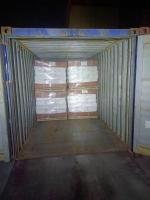High visocosity of anionic polyacrylamide used for consturction bored piling
Anionic polyacrylamide (PAM) is a type of water-soluble polymer that is widely used in the construction industry, particularly in bored piling applications. Bored piling is a technique used in
foundation construction where deep cylindrical holes are bored into the ground and filled with concrete. PAM is used in bored piling to enhance
the stability of the borehole and improve the overall quality of the foundation. In this article, we will discuss in detail the application of anionic
polyacrylamide in construction bored piling.
1. Improving soil stability
Anionic polyacrylamide can be used as a soil stabilizer in bored piling. During the drilling process, the borehole walls are subjected to high
stresses due to the weight of the overburden soil. This can cause the borehole walls to collapse, resulting in a loss of stability and an increase
in drilling costs. PAM can help to prevent this by forming a protective film on the borehole walls, reducing the friction between the soil and the
borehole walls, and improving the stability of the borehole.
2. Enhancing borehole stability
PAM can also be used to enhance the stability of the borehole during the drilling process. When the borehole is being drilled, water is used to
cool the drill bit and flush out the cuttings. However, this water can cause the borehole walls to become unstable, resulting in a collapse of the
borehole. PAM can help to prevent this by reducing the water seepage into the soil, which can improve the stability of the borehole and prevent
collapse.
3. Reducing water seepage
Water seepage is a common problem in bored piling. When the borehole is being drilled, water is used to cool the drill bit and flush out the cuttings.
However, this water can seep into the surrounding soil, causing instability and increasing the risk of collapse. PAM can be used to reduce water
seepage by forming a gel-like substance around the borehole walls, which can help to reduce the permeability of the soil and prevent water from seeping into the soil.
4. Improving drilling efficiency
PAM can also be used to improve the drilling efficiency in bored piling. When the borehole is being drilled, friction between the drill bit and the soil
can cause wear and tear on the drill bit, which can increase the drilling costs. PAM can help to reduce friction between the drill bit and the soil,
which can improve the drilling efficiency and reduce wear and tear on the drill bit.
5. Reducing environmental impact
Bored piling can have a significant environmental impact, particularly if the borehole collapses and soil and water are contaminated. PAM can help
to reduce the environmental impact of bored piling by stabilizing the soil and preventing collapse, which can reduce the risk of soil and water
contamination.
6. Enhancing the quality of the foundation
Finally, PAM can be used to enhance the overall quality of the foundation in bored piling. A stable and strong foundation is essential for any
construction project, and PAM can help to improve the stability of the borehole, reduce water seepage, and enhance the drilling efficiency,
resulting in a high-quality foundation that can withstand the test of time.
In conclusion, anionic polyacrylamide has many applications in construction bored piling. It can be used to enhance soil stability, borehole
stability, reduce water seepage, improve drilling efficiency, reduce environmental impact, and enhance the quality of the foundation. By using
PAM in bored piling, construction companies can improve the efficiency and effectiveness of their construction projects, resulting in a strong
and stable foundation that can withstand the test of time.

